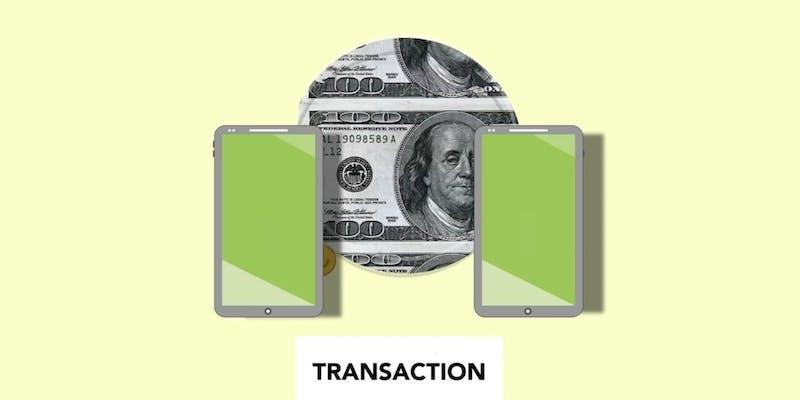Understanding the Six ACH Transfer Limit Per Month in Savings Accounts
Nov 19, 2023 By Susan Kelly
Are you aware that most savings accounts have a limit of six (6) monthly transfers? Exceeding this limit can lead to fees and other penalties from your bank. For instance, Bank of America imposes a Withdrawal Limit Fee of $10 for each excess transaction.
Understanding this rule is crucial to manage your savings effectively and avoid unnecessary costs.
The Basis of the Six-Transfer Limit
Regulation D: The Governing Rule
The Federal Reserve Board's Regulation D plays a vital role in the financial world by setting the framework for banking operations. It specifically targets "savings deposits," shaping the rules for withdrawals and transfers from these accounts.
Regulation D categorically sets the limit for ACH transactions within its structure, a common form of bank-to-bank transfers. These ACH payments are capped to ensure savings accounts are not excessively used for frequent transactions.
Under Section 204.2(d)(2), the regulation clearly outlines that an ACH bank transfer and other transactions should not exceed six per month. This rule is pivotal in maintaining the essence of savings accounts, differentiating them from regular checking accounts where such limits on ACH transactions do not apply.
Why the Limit Exists
The six-transfer limit on ACH payments is primarily due to the regulatory framework designed to maintain financial stability. Banks must have a certain reserve of funds and savings accounts, which are a significant source of these reserves and are governed by stricter rules than checking accounts.
The limit on ACH bank transfers helps banks adhere to these reserve requirements. An ACH transaction moves funds out of the savings account, impacting the reserve balance. Therefore, limiting these ACH payments to six per month ensures that a substantial amount of funds remains relatively stable within the bank.
This rule helps distinguish savings accounts from transactional accounts and reinforces savings accounts' purpose – to store funds for longer terms rather than frequent ACH bank transfers.
What Counts as a Transfer?

When discussing the limit of six ACH transactions per month from savings accounts, it's important to pinpoint exactly what types of transfers are included. Not all movements of money fall under this rule. Specifically, the limit applies to what's termed as "convenient" ACH bank transfers. This includes any ACH payment that is preauthorized, automatic, made via telephone, or initiated through a computer.
For example, if you set up an ACH payment for your monthly bills, this is considered a convenient transfer and counts towards your monthly limit. The same goes for any ACH transaction you might initiate through an online banking portal or a telephone instruction. These ACH bank transfers are easy and quick, falling under the convenient category.
This rule does not apply to certain withdrawals and transfers. ATM withdrawals from your savings account do not count toward your ACH transaction limit. The six-transfer limit does not apply to convenient ACH payments like in-person withdrawals or phone orders for mailed checks.
Understanding these distinctions is vital to managing your ACH bank transfers effectively. Adherence to these rules can result in fees or other penalties from your bank. For instance, exceeding this limit could lead to a charge of around $10 for each additional ACH payment or transfer.
How To Get Around The Limit?
When managing your savings account, an intelligent approach can help you stay within the ACH transfer limit. One effective strategy is to consolidate your needs into fewer ACH transactions.
Instead of multiple small transfers, plan for more extensive, less frequent ACH bank transfers. This method keeps you within the regulatory limit and streamlines your financial management. Another key tactic is to lean on withdrawal methods that don't count towards the ACH payment limit.
For instance, using an ATM or visiting your bank to withdraw in person can be a wise choice. These methods provide flexibility and keep your ACH transaction count in check.
Consequences of Exceeding the Limit
Exceeding your savings account's six ACH transaction limit can lead to unwanted financial consequences. Banks like Ally Bank and Bank of America often impose a fee for each ACH payment that exceeds the limit.
This fee can be as much as $10 per excess ACH bank transfer, which can add up quickly. Furthermore, the bank might take more severe actions if you frequently exceed this limit.
These include closing your savings account or converting it to a different account type that might not have the benefits of a savings account. Understanding and respecting the ACH transaction limits is crucial to avoid these financial setbacks.
Recent Changes and Trends

During the COVID-19 pandemic, the Federal Reserve temporarily suspended Regulation D's transfer limit. This unprecedented move meant that the usual restrictions on ACH payments were lifted.
Account holders could make unlimited ACH transactions from their savings accounts without penalties. This temporary suspension responded to the increased financial challenges and the need for greater access to funds during the pandemic.
As people faced economic hardships, the flexibility in ACH bank transfers provided much-needed relief, allowing more frequent access to savings without the fear of fees. This change highlighted the potential for modernizing banking rules to suit evolving needs.
Future of Regulation D
Looking ahead, the future of Regulation D is a topic of ongoing discussion, especially considering the changing landscape of banking and financial services. The temporary suspension of the transfer limit during COVID-19 has sparked conversations about possibly updating or modernizing these regulations.
With the increasing reliance on digital banking and the growing preference for ACH bank transfers, there is a clear need for rules that reflect current financial behaviors and needs.
Future changes could include permanently increasing or removing the limit on ACH transactions, thus adapting to the growing trend of electronic banking. Such modernization would align Regulation D with the contemporary practices of ACH payments, providing more flexibility and convenience for account holders.





